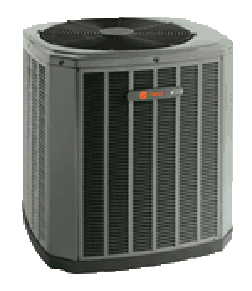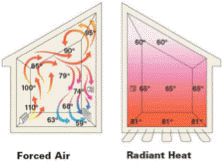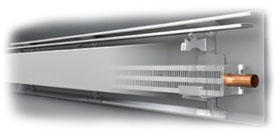



Types of Heating Systems
Forced Air Systems

This type of heating system is the most common type of home heating system. It works by heating air in a furnace and then forcing the air out through ductwork and vents installed throughout the home. It is commonly known as a central heating system because it comes from a central point in the home. The air can be heated by electricity, natural gas, propane or oil. The furnace heats air as it is passed over a heat exchange unit. Air is drawn into the furnace, heated and then forced back into the home through ducts. This type of system is also very common because the ducts can double-up to deliver air through an evaporative cooler (swamp cooler) or refrigerated air system. The air filtration systems require regular maintenance for optimal function.
Radiant Heat
This type of system involves supplying heat directly
to the floor or panels in the walls or ceiling of a home. In this system
heat is delivered through a system of hot water tubes underneath the floor,
panels or ceiling. The hot water is heated using a boiler which is usually
powered by oil, natural gas, propane or electricity and can be augmented by
solar panels
Types of Radiant Floor Heat
|
Hot Water Baseboard SystemAlso called (Hydronic baseboard heaters) use central heating, but channel hot water through pipes to individual baseboard heating units to heat rooms. With hot water baseboard heating, a boiler heats water and sends it through pipes from heater to heater. Each unit takes a small amount of heat from the water and sends it on to the next heater. |
 |